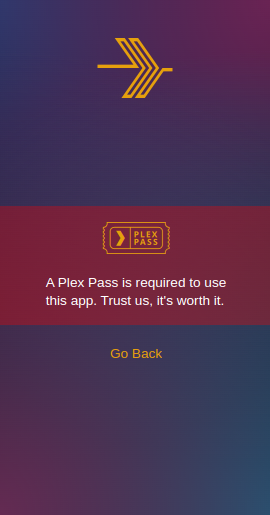

That domain currently hosts a “this domain may be for sale” page, but it’s been registered since 2005 so it’s definitely not because of this post.


That domain currently hosts a “this domain may be for sale” page, but it’s been registered since 2005 so it’s definitely not because of this post.
It’s possible your e-mail account was compromised, and that’s how they were able to click that confirmation link you ignored. Change your e-mail password.


I tried it on Linux Mint and I’m directed to FlatHub, which states:
★★ You’ll need a Plex Media Server and an active Plex Pass to use this app ★★
Installed it anyway, but:

I guess they didn’t update that version yet?
Edit ~24 hours later: I just got the update. It works now.
Edit 2: … but media keys don’t seem to work :(


Someone already made one 3 hours ago. Though apparently it won’t help by itself, since their robots.txt disallows indexing anyway (and that same issue also requests that to be adjusted).


According to their develop pages, they do look for that:
There are a handful of factors that play a role in canonicalization: […], and
rel="canonical"linkannotations.
(but Google considers it a hint, so they don’t have to honor it)
Also, that change was just for Lemmy. Other Fediverse sites may not do the same, which would lessen the effect. For example, from a quick look at a random federated post on kbin.social, there was no such <link rel="canonical"/> element present in the page source.


As of v0.18.2, Lemmy marks the “original URL” as the canonical URL so search engines know which page is the “real” one. Shouldn’t that help?
I want to turn it off so bad, but fomo, that one email from that one person I knew 25 years ago who only has that email address … fml.
If you want to turn it off, can’t you just use some free service to forward messages to your new address?


Hopefully AVM gets to register fritz.box then, because they’ve been setting up their customers with that as their internal domain for ages…


On my install it looks like it’s not just an easily modified HTML form: it appears to be generated by (minified) javascript.
However, the length of time it will remember you is configurable, so if you set that to something like 10 years (10y) it shouldn’t bother you very often…


Can you really call it MIT licensed when you’re adding conditions to the license?
Silly as it is, many ISPs hand out dynamic IPv6 prefixes that may change once in a while. Or “dynamic” prefixes that never seem to change (but are not guaranteed never to change).
The reason is of course that they like being able to charge extra for static IPv4 addresses, and they see no reason to get rid of that revenue source for IPv6.


They don’t yet support these TLDs, but according to this blog post they will be added very soon:
Note: We plan to support .dev and .app by mid-July 2023.
I use docker-compose, and basically just end all my docker-compose.yaml files with
networks:
default:
external:
name: proxynet
This redefines the default network to a pre-existing proxynet network. All services that do not specify a network configuration automatically get added to that network. Because this refers to the same network in each file, it is shared even with services defined in other yaml files (which is not the default).
The proxynet network was created manually using docker network create proxynet.


Hard for a “layperson”, maybe. But IMHO for someone interested in self-hosting this probably should not be a hard problem to solve, or at least a decent “warmup exercise” to see if you’d like it.
I say this because you don’t even need to write the script yourself, there are plenty of preexisting applications that can be configured to notify you of updates to an RSS feed.
I’m sure I could whip that up in changedetection.io or Node-RED pretty quickly, for example.
I don’t use a dedicated RSS feed reader app, but I’d also be somewhat surprised if there isn’t one that supports some form of push notifications.
Aurora is no longer maintained, but it still works just fine. It’s a Windows app, so not web-accessible or anything, but it’s free. It only contains the SRD content by default (probably for legal reasons), but there’s at least one publicly-accessible elements repository for it that you can find using your favorite search engine.